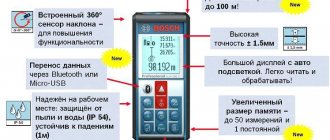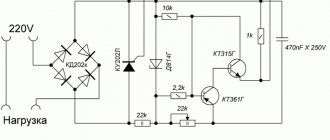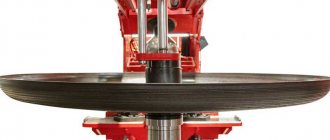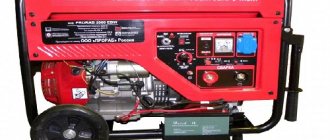Scope of application of the construction plumb line
Despite the simplicity of the tool (you can make it with your own hands from a rope and a weight), it will become absolutely necessary when carrying out construction and finishing work. It is also used for high-precision excavation work.
The plumb line will provide invaluable assistance with:
- Installation of beacons during wall alignment;
- Wallpapering;
- Control of surface evenness;
- Drawing vertical lines;
- Installation of doorways and window frames;
- Installation of roof and formwork;
- Checking the evenness of ditches, ditches and other holes.
You can even use it for such non-construction purposes as hanging pictures and photographs or installing cabinets.
The principle of operation of the device is extremely simple and does not require fundamental knowledge in the field of physics: a load placed on a freely hanging rope will create a perfectly straight vertical line.
How to use
A plumb bob is a device for checking the verticality of surfaces. Therefore, it must be secured at the top point of the plane or object being tested.
Some models are sold with a washer of the same diameter as the cylinder. It turns out that there is a weight at one end and a washer at the other. By applying the washer to the surface and calming the vibrations of the load, you can see if there is a difference between the vertical of the thread and the plane being tested.
By the way, the shadow from the thread is also vertical. So you can navigate by it.
Applying the thread to a vertical surface, wait until its vibrations calm down, and then see if the distance from the surface being tested to the cord is the same
Other models do not have a washer, but are wound on a piece of plastic, sometimes with markings on it, like on a ruler. There are plumb lines whose cord is hidden in a plastic case (like a tape measure). Some people find them more convenient to work with, and the body can be used as a support for the cord.
During long-term work (plastering, for example), it is necessary to have a plumb line in front of your eyes and level the surface along it. Then the fastener is most often a long nail or self-tapping screw. It is hammered/screwed in so that it holds tightly, but a significant portion of it sticks out. A cord is tied or wound near the cap, and the weight itself is lowered to the required distance. After the vibrations have stopped, the thread with the weight is an ideal vertical. Having a standard in front of your eyes, you can compare how smooth the surface in front of you is.
In this way you can check the verticality of the wall, the correct placement of household appliances, furniture, etc.
How to “break off corners” using a plumb line is shown in the video. It's difficult to describe, it's better to see. In short, you need to “catch” whether the angle, the plane of the wall and the plumb line coincide or not.
When laying a brick wall, a plumb line with a cord is necessary so that you can check whether the wall has fallen off. To do this, apply it to one side of the wall and the other, checking the distance from the cord to the surface along its entire length. It is clear that the distance should be the same. Such control is carried out at several points. The verticality of walls made of timber and logs is controlled in exactly the same way. But when using non-rounded logs, control is more difficult due to the different diameters of the crowns. However, you can see the deviation in this case too. A plumb line is useful when setting up formwork, installing doors, and constructing a roof truss system. Yes, it is needed in almost any construction and many finishing operations.
The same can be done using a building level. It is much simpler and faster, but this device has a fairly large error. As a result, the walls will move—bend into a hump, or form holes. Therefore, a combination of the two dimensions is desirable. With a little experience, you can check walls with a plumb line through four or five rows of brickwork, using a level the rest of the time.
The cord level has one rather serious drawback: it is almost impossible to work with it in the wind: the weight constantly wobbles, which makes it impossible to fix the position of the cord. In order to somehow combat this scourge, they came up with the idea of immersing the load in a vessel with water. Place a vessel below and recess the plumb cone a little. You can work in moderate winds.
Magnetic plumb line
A magnetic plumb line is the same as a cord plumb line, only it is attached using a magnet.
What upsets builders and installers the most is that they need to fiddle around and somehow secure the cord. The second problem is that the thread often gets tangled, which also does not improve the mood. So they came up with an improved construction plumb line, the thread of which rolls onto a reel located in the body. And to make it more convenient to attach it, several magnets were built into the body. It can be easily installed on any metal surface: a magnet holds it at the desired height.
To make it easy to attach to wood, a needle is made in the same body. So this problem is solved. Due to the presence of magnets in the body, this plumb line received the name “magnetic”. A very convenient and practical thing.
The second version of a homemade plumb line
Manufacturing materials
In most cases, aluminum sheets with a thickness of no more than 2 millimeters serve as the bar. It is convenient to wind the thread on them after use, and the material is lightweight and durable.
- Nylon or nylon threads are used as a cord. They are not affected by water or cold, glide well and do not get tangled.
- The weights are steel blanks in the shape of a cone. This shape allows for maximum balancing and minimal sway.
- Steel is considered the most suitable option: it has high hardness, durability, and optimal weight, allowing it to react less to gusts of wind.
The disadvantage of the material will be its high density: if it falls, the plumb line can damage the finishing materials laid underneath it.
To prevent such troubles, weights made of dense rubber are used. The material is a bit like hockey pucks and is elastic, heavy and rigid. Such a load, even during a fall, will not cause harm to the lying materials.
Algorithm for working with marking cord
The design of the device is quite simple, using the marking cord is also easy.
How to refill
In order for the cord to leave a clear and contrasting mark on the marked surface, the body must be filled with high-quality coloring powder. During the unwinding process, the thread is coated with powder and becomes ready for marking.
In order to fill the body with dye, you need to unscrew the cap covering the loading hole. Powder is poured into it.
Its supply inside the case will have to be replenished whenever the marking line, broken off by the cord, begins to fade.
When using for the first time after purchase, you must completely unwind the thread and fill in the pigment to three-quarters of the volume of the body. Next, the thread is wound up and the device is shaken vigorously. You should not save on purchasing a coloring composition. In Moscow, powder of acceptable quality should not cost less than 80-100 rubles
How to thread the marking cord
Performing markup
First, using a hydraulic or laser level, reference points are placed at the beginning and end of the marked line. Screws are screwed into them or small nails are driven into them. The marking thread is stretched between them. Now you need to take the cord by the middle with two fingers, pull it a little in a direction perpendicular to the surface and the marked line and release it. A clear straight line should appear on the surface. Now you can remove the cord from the markers and move on to marking the next line.
If it is possible to attract an assistant, the work will speed up significantly. No need to attach markers. One presses the beginning of the thread, the other the end. One of the workers pulls back and releases the thread.
Marking with marker cord
How to use a marking cord correctly in specific situations?
To mark gypsum suspended ceilings, you must follow the following recommendations:
- Find the lowest point on the rough ceiling, which will be covered with plasterboard. To do this, use a hydraulic level or level. It will be much more convenient and faster to use a laser level. Its high price will pay for itself many times over due to the time saved.
- At the found level, a mark is made on the nearest wall. Using a level, spirit level or laser level, I repeat the mark twice on each wall.
- The beginning and end of the marking cord are recorded using the marks set; it should fit snugly to the surface.
- Take the thread by the middle with two fingers, pull it a little and quickly release it. After impact, the paint powder leaves a smooth mark on the wall.
- The operation is repeated on the remaining walls.
The broken contour will serve as a guide for installing the starting guide profile, to which the suspended ceiling will be attached.
If the room has an imperfect shape, deviating from a regular rectangle, then when laying ceramic tiles on the floor, even rows will emphasize this. In one corner the wedge will be clearly visible. To disguise such a defect, the tiles are laid diagonally.
Marking with marker cord
To apply diagonal markings to the screed under a ceramic tile floor, proceed as follows:
- The marking cord is pulled between the corners of the room at a height of 5-10 mm from the surface of the subfloor and the main diagonal is marked.
- The cord is stretched between the other two corners and the second diagonal is beaten off.
- The intersection point of the two lines will mark the geometric center of the room;
- From it, on both sides along the main diagonal, the first two rows of tiles should be laid out, using centering crosses to maintain equal distance and spacing.
Next, the rows of tiles are laid from the center to the auxiliary corners, using the first two rows as reference ones.
Plumb weight
Depending on the purpose of using the plumb line, weights of different weights are used:
- for indoor work, a mass of 100 grams is sufficient;
- on the street you will need a slightly larger load, within 300 grams;
- in strong gusts of wind, even heavier heads are used.
However, tools with such weights are more expensive and less convenient to carry and use. And there will be more damage when such massive weights fall.
What is a plumb bob with a magnet?
In the design discussed earlier, the cord is the weak point of the tool. It often breaks, gets tangled, or cannot be completely fixed. To avoid these shortcomings, the design was slightly modified. In an improved version, the thread is wound on a special spool placed inside the frame.
Convenient fixation on the work object is guaranteed with the help of built-in magnets. They provide reliable fastening to any metal surface. The magnet allows you to position the tool at any height. When using the device with wood, an additional needle is provided, mounted in the body.
Plumb line length
The standard version provides a length of 5 meters. But for interior spaces, a height of 2.5-3 meters is quite sufficient. This is quite enough to decorate any living space.
Plumb - simplicity that gives birth to harmony
One of the first measuring devices of this operating principle used by mankind is a plumb line. This simplest device, still in use today, is a rope with a weight at the end. When suspended, the weight pulls on the thread that secures it, forming an ideal vertical guide. Over thousands of years of use, only the shape of the load has changed - from a piece of stone to a spear-shaped tip. And if you attach a laser pointer-keychain to a rope, you will get a simple laser plumb line that perfectly copes with the task of transferring markings from the floor to the ceiling (for example, when installing interior partitions).
The disadvantages of this method include a rather large measurement error associated with too sharp a viewing angle, and the difficulty of securing the load, especially in windy weather.
Types of plumb lines
Gone are the days when builders made plumb lines from scrap materials or secretly made them in factories.
Today's engineers have tried to diversify even such a simple tool.
So in stores you can find similar devices of a wide variety of types.
- Classic (cord) plumb lines. Such tools have remained virtually unchanged since their inception. The only additions were a built-in magnet for attaching to an iron surface, a needle for attaching to wood, and a hole on the bar for attaching to a nail. But these possibilities are not realized in every plumb line.
- Reel plumbs. For ease of use, the bar can be represented by a spool into which the thread is wound. The device slightly resembles a tape measure or a spinning rod box, is small in size, and allows you to avoid wasting time untangling the thread of a conventional device.
- Laser plumb lines. They are considered a more advanced technique, adapted for carrying out grandiose work. The device does not take up much space and can be powered by batteries or a rechargeable battery, depending on the model. All data is displayed on the screen. Additional functions include determining errors not only on vertical, but also horizontal surfaces, as well as angles.
- Electronic plumb lines. In fact, this is just another mobile application. It is supported by the Android operating system and is becoming more and more popular every day. After all, you can use it at any time without additional devices.
A separate category is made up of homemade plumb lines, consisting of twine (clothesline, nylon cord, woolen or ordinary thread) and a bolt (washers, screws, water bottles, other devices at hand). All this can be easily assembled on site and can also be easily disassembled into individual parts.
Do-it-yourself standard plumb line
Making a plumb line to check the verticality of surfaces is a very simple process.
The most important step is to find or make a small weight weighing up to 1 kilogram, preferably 750 grams. This weight must be well centered.
Next you need a medium diameter bolt.
A small through hole is drilled on the side of the bolt head.
A hole for the bolt is drilled in the center of the load, after which it is driven with a tap of the appropriate diameter with a suitable thread.
The second to last step is to insert the bolt into the weight hole.
Well, the last step will be to thread a cord through the hole in the bolt head, tie a loop and test your homemade plumb line.
In the second option, you can immediately drill a through hole in the load; this hole should be larger in diameter than the diameter of the inserted cord.
Next, the cord is inserted and a long loop is made, which will allow the load to take a strictly vertical position.
The last step of both methods is to test a homemade plumb line; for this you can use a ruler or tape measure.
Source instrumentgid.ru
I recommend the following video, in which the author very quickly independently makes a plumb line for measuring the verticality of surfaces:
Criteria for choosing a plumb line
When choosing a plumb line, pay attention to:
- Type of construction work required;
- Material of manufacture;
- Thread length:
- Required measurement accuracy;
- Additional features.
The cost of the device may vary from manufacturer to manufacturer. But to a greater extent the price depends on the number of additional services, which are not always used. So for small DIY repairs, it’s quite possible to buy the simplest model.
Bubble level (spirit level)
The most common construction-grade model, since it most often allows you to work in both vertical and horizontal space, does not require the help of a partner and is inexpensive. Used when installing windows, doors, mounting stairs, laying flooring, attaching shelves, sinks, and so on.
The bubble level looks like a large ruler with ampoules filled with colored liquid. The body is most often made of aluminum. On the one hand, this is good, since you often have to work with a spirit level at heights, and aluminum is a lightweight material. On the other hand, if dropped, especially from such a high height, the instrument can easily be damaged and will no longer be accurate.
There are usually 2 or 3 ampoules on a spirit level. Most often they are filled with alcohol, sometimes it is tinted with fluorescent liquid to make it easier to work in the dark. The ampoules help determine vertical, horizontal and 45 degree angles. Alcohol does not freeze at subzero temperatures, so the tool can be used even in winter.
Settings
After purchase, the spirit level must be checked and, if necessary, adjusted. This procedure is also indicated after the instrument has been dropped or damaged.
You need to fill a large container with water, put a thin piece of polystyrene foam - this will create a perfectly flat surface. If the spirit level shows an error, that is, the bubble is not exactly in the center, you need to twist the ampoule with alcohol around its axis, thereby adjusting it.
Operating rules
Such a tool has a working surface, usually it is “back”, absolutely flat, without markings, and sometimes not painted. If you do not work with it, slight errors may occur due to the protruding surface of the front side.
It is wrong to place a corner in the wall with its side, since in this way no objective data will be obtained, because a non-existent surface is being measured. The most that can be said is whether there are any dips or bulges on the wall under the instrument.
Most often, a “bubble” is used, which is located in the center of the spirit level - it allows you to determine the horizontal - that is, a plane parallel to the horizon. This will come in handy when working with floors, ceilings, doors, windows, and so on.
The bubble perpendicular to it is responsible for the vertical, that is, everything that is located at an angle of 90 degrees to the floor: these are slopes, doors, arches, pillars, etc.
Let's say we need to hang a shelf. To do this, take it in your hands, place the level on top with the bubble up and bring it to the intended location. Next, we observe the bubble: if it is tilted to the left, it is necessary to lower the left side or raise the right side. And vice versa. Next, we make notes with a pencil and remove the tool.
If you need to check the evenness of the wall, then you need to place a level with the working surface against the wall vertically with the ampoule at the top. If the bubble deviates from the wall, it means the bottom is sticking out, you need to add plaster on top. And vice versa.
Working with a spirit level is not difficult, but it requires time and care.
Some tips
Classic plumb lines do not require much knowledge. It is enough to fix the bar on a vertical surface, lower the cord and wait for it to fix in one position.
Laser and electric plumb lines have instructions that you should read before starting work.
In strong winds, stabilizing liquid will help to obtain readings of a classic plumb line. To do this, you will need a container with a fairly viscous liquid (shampoo, liquid soap, dishwashing detergent will do).
The container is placed along the line of the thread so that the load does not touch the walls. Stabilization of the plumb line in this case occurs much faster, and the readings are more accurate.
Magnet: to align vertically on a construction site
There are different types of such tools, the most popular ones are corded and magnetic plumb bob. Recently, such devices as specialized construction devices, electronic devices, painting devices, laser devices, and cone devices have also been encountered. Construction models can be considered simple and at the same time reliable measuring instruments. More often they are a metal cylinder with a steel cone at the end, and the whole thing is suspended on a strong cord.
The upper part of the metal cylinder has a threaded hole and a bolt is screwed into it. A cord is inserted into the hole itself through the bolt, but a knot is made on the side of the head for strength. The bolt is screwed into the base itself or into the body, and a rope is also threaded there. The most important thing in this design is that the top is located along the axis of the cylinder; this is calibrated at the manufacturer, although it would be a good idea to check this before use. Sometimes the device is made entirely in the form of a cone, then they say that the plumb line is conical, although its shape does not affect the operation.











